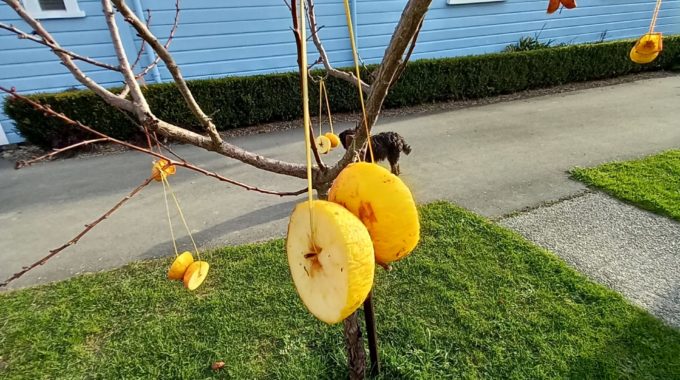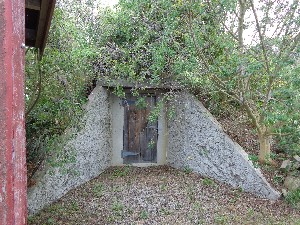This is a cheap way of feeding waxeye (tauhou) birds in winter. It actually works,…
Revolving Worm Farm
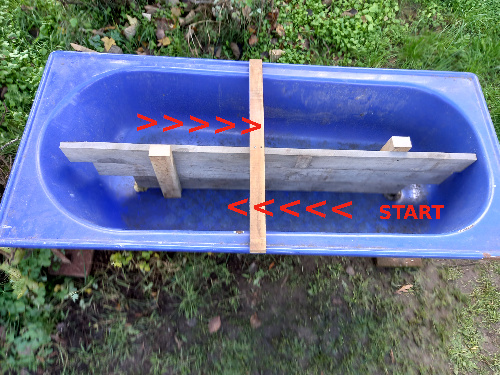
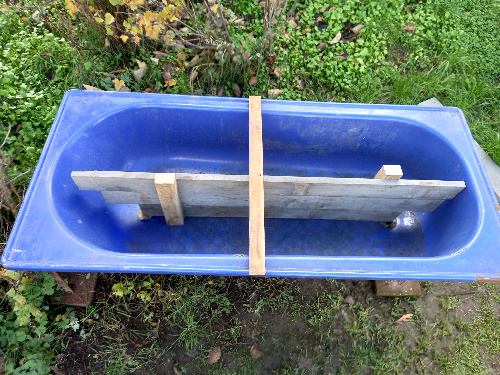
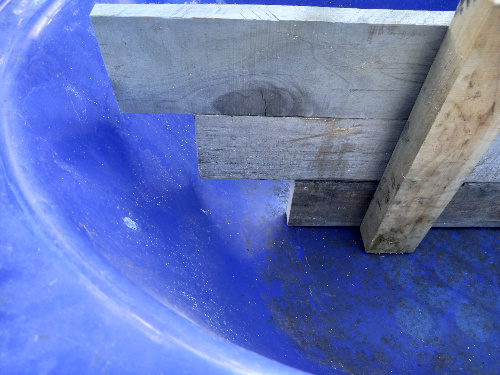
We have built a larger worm farm. It is a revolving worm farm.
How it’s made: Divide the middle of the bath with a wooden structure. Don’t use treated wood. Make sure there are open parts on each end, so the worms can move from one area to the next. The plan is to add scraps from one part of the bath and slowly continue doing so, in a clockwise or anti clockwise direction. The worms will follow the food. Make sure you fill right to the top of the bath, before you move further along the bath space. The aim is that the worms “eat” what is added and by the time you have filled right around the bath, the scrapes in the part where you started should be fully “eaten”. You should now be able to remove the “eaten” part and use it in the garden as valuable compost.
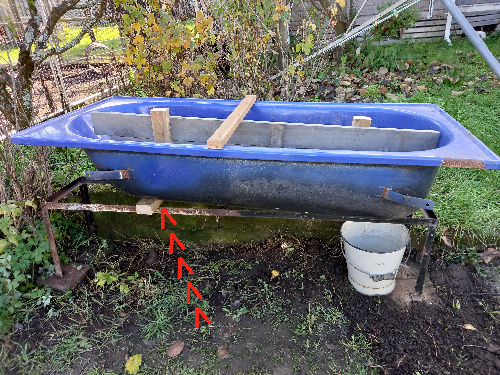
When setting up the bath, make sure it is tilted a little bit, so the worm juices flow towards the drain and make sure you have a bucket underneath to collect the juice, which is a valuable liquid fertiliser. On some plants (heavy feeders) I use it undiluted and on other plants I dilute it with some water.
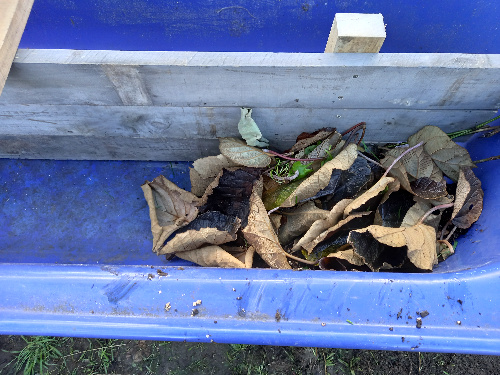
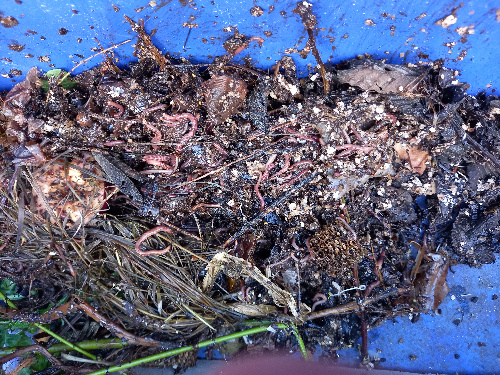
Add food for the worms and add worms to the organic matter.
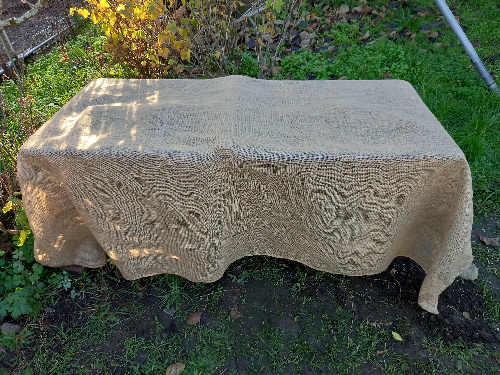
Then cover the bath with a canvas. I used a plastic cover and hessian material (for good looks). The cover is for three reasons. The worms like it dark, to stop rats eating the scraps and the worms and the plastic cover prevents rain washing the worm juice away. I also recommend putting a sieve on top of the worm juice bucket. This prevents worms and debris falling into the juice.
Problems with a Worm Farm
There is a problem, if a worm farm smells unpleasant. It could be because there:
- are not enough worms to ‘eat’ the food supplied
- is too much acidity in the worm farm. Often flies hang around an acidic worm farm and the solution is to add some lime
SHARE THIS

